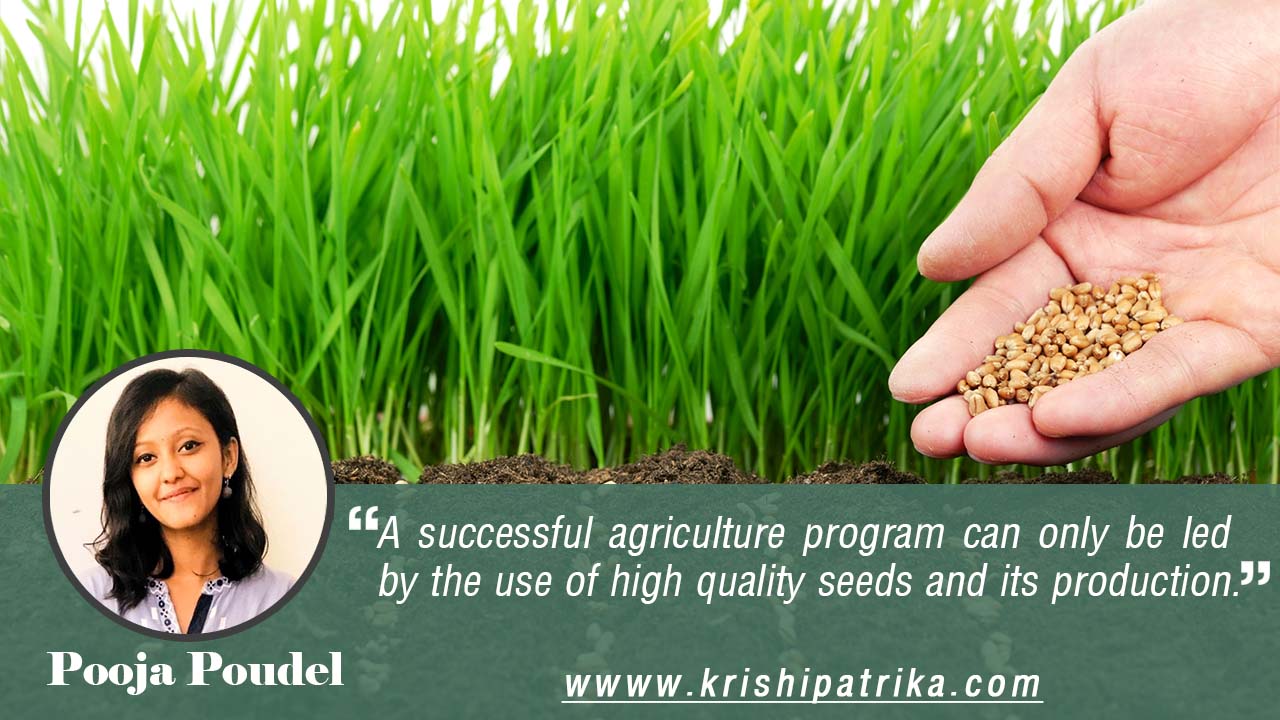
We all are somehow paused from the last 8 months, giving ear to the news of increasing Covid-19 pandemic everyday. Being locked down inside our houses for months, leaving all our studies or jobs or offices, we’re here helpless. Though in Nepal, the spread of pandemic is not as harsh as other countries, being an underdeveloped country bounded by poverty and being dependent on neighboring countries, we may risk a food emergency that could have impact on thousands of people. And we have no idea how long it prevails. The effect of Covid-19 is very disconcerting throughout the nation and its economy. This crucial time has make us realized that most of the occupation can come with a break and agriculture is definitely not one of them. Everybody needs food twice a day, everyday. Agriculture is not like a vehicle, which stops in the absence of fuel or driver and begins the movement in its presence, but its analogy is to time, which must just keep on moving. So, as the time comes, farmers must come to the field and act. They can neither halt nor wait. Being an agricultural country, where about 80% of the population is involved in agriculture at present, there is still not enough production so that we have to import from neighboring countries and this problem is escalated in the present state. But agricultural powerhouse countries like China, India and USA can impose ban on food exports and other agricultural inputs or hike the prices due to the prolonged effect of this widespread. It needs to be concerned that producers might not be able to plant this year, or not plant enough, as normally due to the border blockade and co-operative shops which sell agro-products at reasonable prices, agro-vet suppliers, agricultural markets, dairies and vegetable markets are opening only sporadically. If we are not aware of this, we will translate into lack of food very soon. However, a great lesson taught by Covid-19 is that every nation should have it’s own food security and self sufficiency strategy at local level to deal with outbreaks like this. But no matter how the bigger problem is and whatever the sources are lacking in agricultural house, clever modification in its practices can trigger it’s production. It is the crucial time when we have to act with our mind along with the labor and practice smart agriculture rather than hard agriculture to enhance the production.

A successful agriculture program can only be led by the use of high quality seeds and its production. Seed is the basic input of agriculture which costs the minimum (<5-10% of the total production cost). The quality of seeds is measured in many ways, including genetic, physical, physiological and pathological purity, germination, vigor, uniformity in sizes and weight, proper moisture content, freedom from seed borne diseases, and any other factors that may affect seed performance in the field like heat, stress, mechanical damage, and pre-harvest sprouting. Other characteristics such as specific chemical composition or resistance to certain diseases or insects also contribute to the quality of seeds. It is usually seen that the use of quality seeds can increase the yield up to 25-30%. In an impoverished country like Nepal, addition of extra 25-30% yield is a huge gift. Quality seeds have higher genetic potential showing good response to agricultural inputs like fertilizer, irrigation and weed control which can improve the productivity of crops by 10-30%. Similarly, along with the higher seed vigor and viability, it can reduce the seed rate by 15-25% and it is also devoid of varietal mixture, off type plant, weed seed, insects and diseases. So being economically beneficial, it is also highly profitable and productive. Also due to the higher genetic potentiality, the desirable traits of parent generation can be seen in its next generation which will enhance the continuation of favorable characters. A project was led by FAO in Central America to improve access to quality seeds of two main staple foods- maize and beans for smallholder seed enterprise, supplying from 8%-16% of nation’s seed requirement. As the project ended, the yield was almost doubled. Along with this, the outcomes were equally qualitative that farmers who planted those seeds also doubled their yields. From this, government recognized the importance of smallholder seed sector and started making policies to support seed production and improve links to the research centers to promote ongoing breeding programs. This has really encouraged the smallholder seed growers to use the quality seeds worldwide.
But at this time of pandemic and hardship, we might wonder that how we can get quality seeds as there is lack of supply everywhere. So we need realize that we should seek for producing the quality seeds on our own. Believe it or not, we can increase the quality of seeds at local level to some extent and it will definitely make a difference. We should emphasize on the use of local seeds that we already have and focus on its quality increment. Quality seed production is not like general seed production. There are certain principles to produce quality seeds which every farmers should be known to.
- The variety used for seed production must be adopted to photoperiodic and temperature conditions, where there is ample sunshine, relatively moderate rainfall, and the absence of strong wind. Excessive wind, dew and rain causes hindrance in normal pollination resulting in poor seed set.
- Selecting high yielding variety adapted to that agro-climatic region is a must. It should possess attributes like disease resistance, free from mixture of weeds, proper moisture content, high germination and vigor.
- Seed priming is one of the important factor for increasing the germination and vigor of seed. Besides, treating the seeds with chemicals or rhizobium inoculation in seed is also very effective.
- At the time of planting, selecting fertile leveled land free from volunteer and weed plants and planting at the right time maintaining proper isolation distance should be considered.
- Harvesting and storage of the also one of the major factor determining the quality of seeds. Harvesting at early stage makes combine harvesting difficult and relative losses due to threshing and cleaning is greater. And late stage may result in increasing weather damage and losses due to shattering of seeds and lodging of plants. As per estimation, about 6-7% post-harvest loss is in storage. Therefore proper moisture content (8-12%) and storage temperature (<21°C) should be maintained to increase the storage life of seed.
Hence, the production of high quality seeds does not happen by chance. Each step in the production system from planting the proper variety in appropriate time to following weed control practice, selecting suitable agro-climatic region, fertility program, and harvest in the right time, cleaning the seeds, storage, and shipping is critical for achieving high quality seeds.









